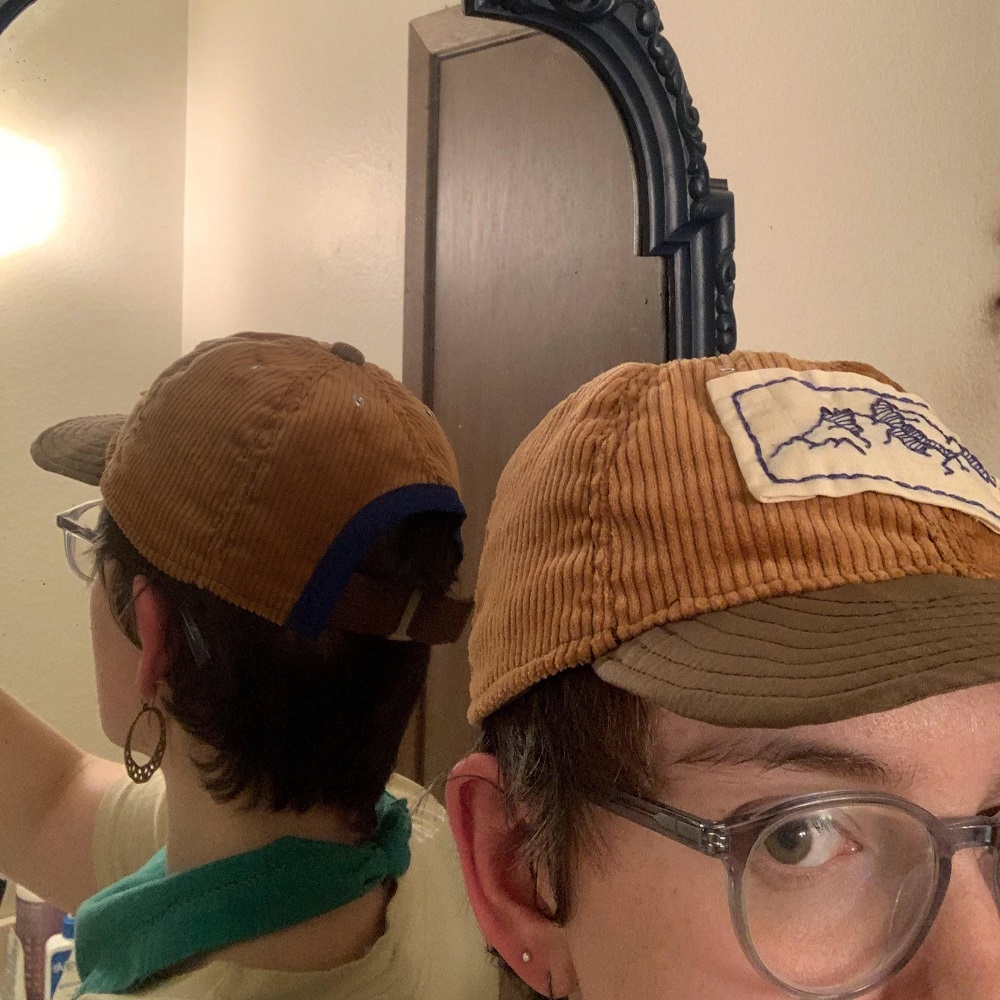Materials and Supplies Needed for Your DIY Baseball Cap
Overview of Necessary Items
To start your DIY baseball cap project, gather these essential items. You’ll need an old baseball cap, which will act as a guide for your new design. Grab some paper for drafting your pattern and choose fabric that’s slightly thick without stretch. Match your thread to the chosen fabric. Fusible interfacing is key for structure, and your sewing accessories should include a sewing machine, zipper foot, scissors, a seam ripper, and an iron.
Selecting the Right Fabric and Interfacing
Choosing the ideal fabric can make or break your baseball cap sewing pattern. Pick a non-stretchy, robust material for durability. Denim or canvas works great. Your interfacing should also be non-stretchy to ensure the cap retains its shape. When applying the interfacing, refer to the manufacturer’s guidelines for the best results. Interfacing reinforces the fabric, giving your cap a professional appearance and lasting form.

Disassembling an Old Baseball Cap
Using an Old Cap as a Template
To create your own baseball cap sewing pattern, first find an old baseball cap. This cap will serve as the blueprint for your new design. Carefully take it apart with a seam ripper. Do this gently so you can preserve the shape of each piece. These pieces will be traced to create your custom pattern. Remember to work slowly to avoid damaging the parts you’ll reuse.
Preserving Parts for Reuse
Some components of the old baseball cap are crucial for your new project. Particularly, the brim’s plastic insert is a key piece you’ll want to keep intact. This part is hard to find on its own, making the old cap’s brim valuable. Also look to keep any closures like snaps or buckles, as these can be reused. As you disassemble the cap, set these parts aside. You’ll later integrate them into your newly crafted cap for a professional finish.
Creating the Sewing Pattern
Tracing the Pieces for the Cap
Once you have disassembled your old baseball cap, the next step is creating your sewing pattern. Lay each piece you have preserved on the paper. Trace around them with precision, ensuring you capture the original shape accurately. If there are seams, unfold them so the full size of the pieces is visible. Be careful not to stretch or distort the fabric while doing this. Repeat the process for all different parts including the main panels and brim.
Adding Seam Allowances and Paper Pattern Preparation
After tracing the pieces, it’s time to add seam allowances to your pattern. This extra fabric margin is critical for sewing seams without losing material. Typically, add a 1.5 centimeter (3/4 inch) seam allowance around each piece. Use a ruler for consistent width and mark it clearly on your paper pattern. Once your allowances are drawn, cut out the paper patterns along these new lines. Label each piece for easy identification later on. You are now ready to cut your fabric according to these patterns augmented with seam allowances.
Cutting and Preparing the Fabric
The Role of Interfacing in Fabric Stabilization
Interfacing is crucial in giving your baseball cap structure and stability. It prevents fabric stretching and ensures the cap retains its professional shape over time. For your DIY baseball cap sewing pattern, choose non-stretch interfacing that complements your chosen fabric. Iron-on interfacing is user-friendly and provides the necessary stiffness to the cap’s panels.
Cutting Fabric Pieces and Interfacing Application
Begin by laying your fabric flat and placing the paper patterns on top. Make sure the fabric doesn’t have wrinkles or folds that could distort the cut pieces. Trace around each pattern with a fabric marker or chalk, remembering to include seam allowances as marked. Cut the fabric with sharp scissors to ensure clean edges. Follow a similar process for your interfacing, tracing the pattern pieces and then cutting them out.
Applying the interfacing is straightforward. Align it to the wrong side of the fabric pieces, following the iron-on instructions. Iron the interfacing onto each piece, being cautious to not overheat or shift the layers. Once fused, the fabric is ready for assembly. The cut and prepared pieces play a key role in building a sturdy and lasting baseball cap.

Assembling the Cap’s Panels
Now that you have your baseball cap sewing pattern pieces cut and prepped, assembling them is the next critical step. This stage shapes the cap, ensuring a snug and comfortable fit.
Sewing and Pressing Techniques for Professional Results
For sewing panels, use a straight stitch following the seam allowance. Begin with the front panel, stitching carefully to maintain the curve of the cap. After sewing, employ a crucial technique: pressing the seams. Pressing with an iron sets the stitches and flattens the fabric for a neat finish. Do this on every seam to avoid bulky and unprofessional looks.
Remember to keep your stitches even and consistent for strength and durability. An evenly sewn cap not only looks good but also holds its shape better.
Joining the Front and Back Panels
After pressing the front panels, attach them to the back. Line up the edges, pin them together, and sew following the same seam allowance. Stop before you reach the top edge; this facilitates attaching the cap’s other parts later.
Once you join the front to the back, the cap begins to take shape. Press these new seams as well, ensuring a crisp, clean look. Pressing also prepares the fabric for the additional topstitching, which secures the seam and adds a decorative touch. Make sure to repeat the pressing and stitching process with each panel addition to maintain a consistent, professional appearance throughout the cap.
Size Fitting and Adjustments
Checking for Proper Fit
Once you’ve pieced together your cap, it’s essential to check the fit. Place the cap on your head and observe any areas that might need adjustment. It should feel snug but not too tight. Look for gaps or puckering, which may indicate where alterations are needed. Pay extra attention to the circumference and depth of the cap, ensuring a comfortable fit all around. This early fit-check saves time, preventing more complex changes later on.
Making Necessary Alterations
If your cap is too loose or tight, you’ll need to make alterations. Begin by marking the spots that require adjustments. For a tighter fit, take in the back seam slightly. To enlarge the cap, you may need to let out some fabric along the seams. Carefully unpick the necessary stitches and re-sew, following your new marks. Always sew new seams with the same 1.5 centimeter (3/4 inch) allowance for consistency. After alterations, try the cap on again to verify the fit. Repeat this process until your DIY baseball cap fits just right.

Finishing Techniques for a Professional Look
To ensure your DIY baseball cap looks store-bought, use finishing techniques that elevate its appearance. The brim and closure are critical elements that need careful crafting and attaching. With the right steps, these components give your cap a tailor-made quality.
Crafting and Attaching the Brim
The brim gives shape and stability to your baseball cap. Use the plastic insert from the old cap to create a firm brim. Cover this insert with fabric cut using your baseball cap sewing pattern. Ensure the fabric is snug over the insert for a clean look. Sew the brim to the cap’s front panel with precise stitching. A zipper foot may help to stitch close to the insert.
Installing Closure Mechanisms
Choose a closure that fits comfortably. You might reuse snaps or buckles from the old cap. For a custom fit, consider an adjustable strap or elastic. Sew the closure to the cap’s back carefully. Make sure it’s secure, yet easy to adjust. For elastic closures, create a fabric tube around the elastic band. Attach it ensuring the cap fits snugly around the head.
These steps make for a professional-looking baseball cap, tailored just for you.
Detailed Guide to Sewing the Facing
Attaching and Finishing the Interior Lining
To sew the facing, first prep the piece. Snip small slits along the inside curve of your facing. This lets the fabric stretch slightly along the cap’s contours. Fold the edge over by 1.5 centimeters (3/4 inch) and iron it flat. Pin this fold in place. Sew along the fold to secure it. Next, trim the outer edge with pinking shears to prevent fraying. Now, place your facing right sides together along your cap’s bottom edge. Line it up, leaving extra fabric near the back. Sew it on with a straight stitch, 1.5 centimeters (3/4 inch) from the edge. Start on the sides, then use your zipper foot to sew close to the brim. Finally, flip the facing inward. Iron it down to set it in place. Stitch any loose back edges inward.
Final Touches and Edging
For a polished look, fold the edge of your facing back into the cap. Pin the folded edge down snugly. Sew close to the very bottom to keep the facing from flipping out. Use a top stitch around the entire bottom edge, about 3 millimeters from the end. Do the sides first, then go around the brim with the zipper foot. This stitching gives a crisp, defined edge, just like professional caps. It also secures the facing and adds to the cap’s overall durability. Finally, cut any excess thread and iron the cap for a smooth finish. Your DIY baseball cap is now complete, featuring a clean interior and a sharp, tailored edge.
